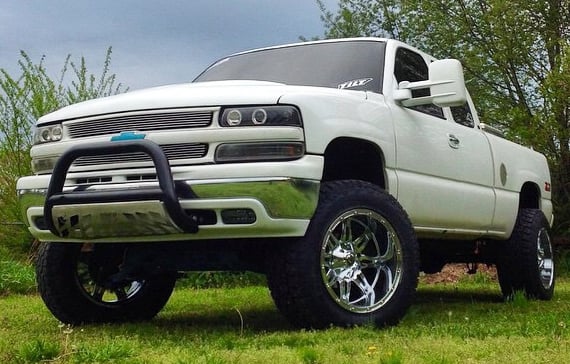Sign up now to join the JEGS email newsletter and be the first to learn about new products, special deals and e-mail only offers!


Owning a truck offers incredible potential for customization, making it a favorite among car enthusiasts. Whether you seek an enhanced appearance or improved functionality, there are countless ways to personalize your vehicle. One popular customization option is lifting your truck, providing several advantages, including increased ground clearance for off-roading and the ability to accommodate larger wheels for maximum traction.
Sign up now to join the JEGS email newsletter and be the first to learn about new products, special deals and e-mail only offers!

Lifting your truck alters its suspension and changes the center of gravity, which impacts the ride quality and stability. While off-roading performance improves, on-pavement handling may be affected. Consider how the modification aligns with your intended use of the truck. Additionally, be prepared for the labor-intensive process, as lifting requires disassembling and reassembling parts. On the bright side, this presents an opportunity for under-the-hood maintenance.
Truck lifting involves two main types: body lifts and suspension lifts. A body lift raises the truck's body off the frame primarily for aesthetic purposes. In contrast, a suspension lift extends the vehicle's suspension, creating more space between the body and the ground. For improved off-road capabilities, a suspension lift is often preferred.


Choose between a body lift or suspension lift based on your desired outcome. If you want the appearance of a lifted truck without major ride alterations, a body lift offers a cost-effective solution. However, for enhanced off-roading performance, a suspension lift is essential. Once you've made this decision, determine the lift's size, ranging from a modest inch or two to an impressive half-foot or more. Compare different models to find the right fit for your needs and budget.
Lifting costs vary depending on the truck type and the lift's size and style. On average, a body lift can range from $100 to $500, while a suspension lift may cost between $1,000 and $5,000. As for installation, it's recommended to have a trained professional handle the process, which may take anywhere from four hours to two days. Although self-installation is possible, it requires more time and expertise.
Prioritize safety when lifting your truck. Ensure proper alignment, steering, and braking to maintain safe driving conditions. Professional installation minimizes potential issues and ensures optimal performance. Additionally, research any legal and regulatory requirements related to lifted vehicles in your area.
To optimize your lifted truck's performance, consider investing in aftermarket parts and upgrades. These may include extended brake lines, modified drivetrain components, and larger, off-road tires. Upgrading certain elements helps complement the lift and ensures a seamless integration with your truck's new configuration.
Lifting your truck is a thrilling customization that opens up a world of possibilities for off-road adventures and improved appearance. By considering the various factors and choosing the right lift kit, you can achieve the desired results and enjoy the benefits of a lifted truck. Remember to prioritize safety and, when in doubt, consult with experts to make the best decisions for your truck's unique needs. For a wide selection of top-quality lift kits, explore JEGS' range and elevate your truck to new heights of performance and style. Happy lifting!




